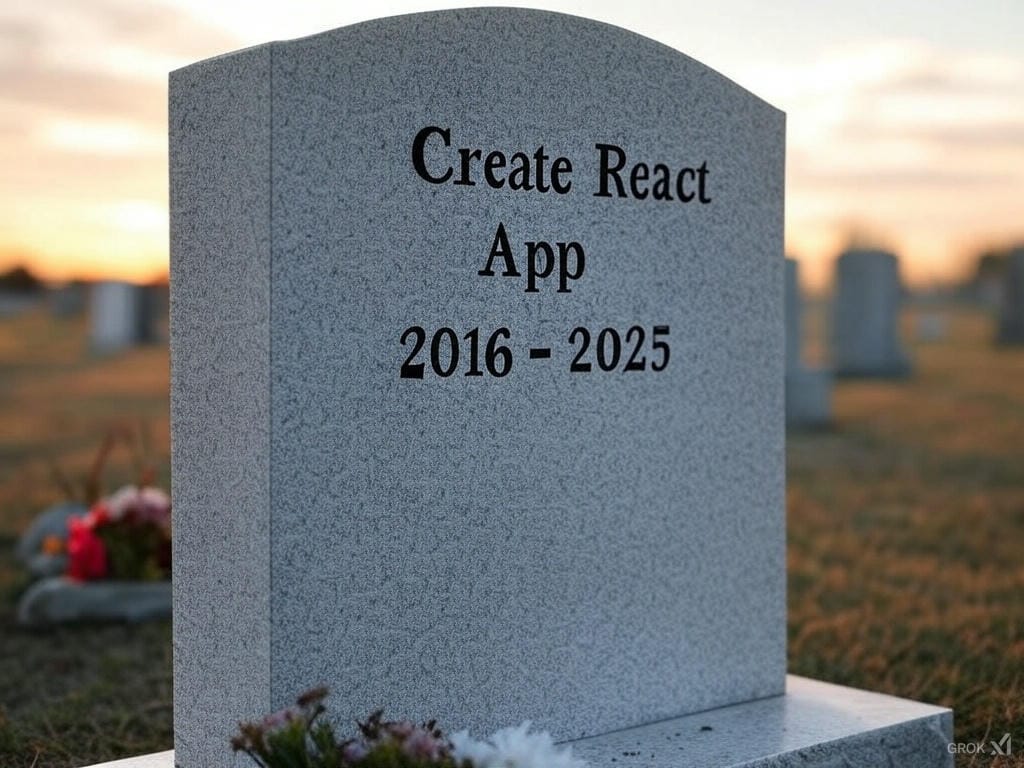In a significant development for the React community, the official blog announced the deprecation of Create React App (CRA) as of February 14, 2025. This decision marks a pivotal moment for developers who have relied on CRA to build or set up React applications.
In this blog post, we will look at the reasons behind this deprecation, the shortcomings of CRA, the context in which it was introduced, and the alternatives available today, including Vite, Parcel, and Next.js.
Why Was Create React App Introduced?
Create React App was released in 2016 to address the challenges of setting up a React development environment. Prior to CRA, developers faced numerous challenges, including configuring build tools such as Webpack, Babel, and ESLint.
CRA helped to simplify this process by providing a boilerplate that allowed developers to quickly start building React applications without worrying about the configuration and setup complexities.
Key Features of Create React App
- Zero Configuration: CRA enabled developers to create a new React app with just a single command, abstracting away the complexities of configuration.
- Built-in Development Server: It came with a built-in development server. CRA also featured Hot Module Replacement (HMR), allowing real-time updates during development.
- Production Build: CRA made it simple to create optimized production builds with a single command.
Drawbacks of Create React App
Despite its initial success, CRA has faced several criticisms and limitations over the years:
- Performance Issues: As applications grew in size and complexity, CRA's build times and performance became a noticable issue. The underlying Webpack configuration led to slow builds and long startup times.
- Limited Customization: While CRA aimed to deliver a zero-configuration experience, this frequently came at the cost of flexibility. Developers struggled to customize the build process or integrate other tools.
- Ejecting Complexity: Ejecting from CRA to gain more control over the configuration was a daunting task. It often led to a more complex setup that could overwhelm developers, especially those new to the ecosystem.
- Outdated Practices: As the JavaScript ecosystem evolved over the years, CRA struggled to keep up with modern development standards, practices, and tools. Developers began looking for alternatives that offered more modern features and better performance.
The Shift to Alternatives
With the deprecation of Create React App, developers have to explore other modern alternatives that address the limitations of CRA. Here are some of the most popular alternatives:
1. Vite
Overview: Vite is a build tool that focuses on speed and performance. It leverages native ES modules in the browser for development, resulting in blazing-fast Hot Module Replacement and faster build times.
Benefits:
- Instant Server Start: Vite's development server starts almost instantly, regardless of the size of the application.
- Hot Module Replacement: Vite's HMR is exceptionally fast, allowing developers to see changes in real-time without having to refresh the page.
- Optimized Build: Vite uses Rollup under the hood for production builds, ensuring optimized output with tree-shaking and code splitting.
Use Case: Vite is a great tool for developers looking for a modern, fast development experience without the hassle of complex configurations.
2. Parcel
Overview: Parcel is another zero-configuration bundler that focuses on simplicity and speed. It automatically handles different file types and optimizes the build process.
Benefits:
- Zero Configuration: Like CRA, Parcel requires very little setup, making it easy to get started.
- Fast Builds: Parcel uses multi-core processing and caching to speed up build times.
- Built-in Support for Various Assets: Parcel can handle JavaScript, CSS, HTML, images, and more without additional configuration.
Use Case: Parcel is best suited for developers who want a simple bundler that works out of the box while still offering customization options using plugins.
3. Next.js
Overview: Next.js is a powerful React framework that supports server-side rendering, static site generation, and routing. It is designed to build production-ready applications with ease.
Benefits:
- Server-Side Rendering: Next.js allows for server-side rendering, improving performance and SEO for web applications.
- Static Site Generation: Developers can pre-render pages at build time, resulting in faster load times and an overall user experience.
- API Routes: Next.js provides built-in API routes, allowing developers to create backend functionality within the same project.
Use Case: Next.js is perfect for developers building complex applications that require server-side rendering or static site generation, offering a comprehensive solution for full-stack development.
Conclusion
The deprecation of Create React App is the end of an era for many developers who used it to create their React projects. While CRA was useful in simplifying the setup process for React applications, its limitations became increasingly evident as the ecosystem evolved.
Fortunately, modern alternatives like Vite, Parcel, and Next.js provide developers with powerful tools that enhance performance, flexibility, and ease of use.
As the React community continues to grow and innovate, embracing these alternatives will help developers to build faster, more efficient applications while keeping up with the latest trends and best practices in web development. For more information on this change, you can read the official announcement here. Happy coding!


